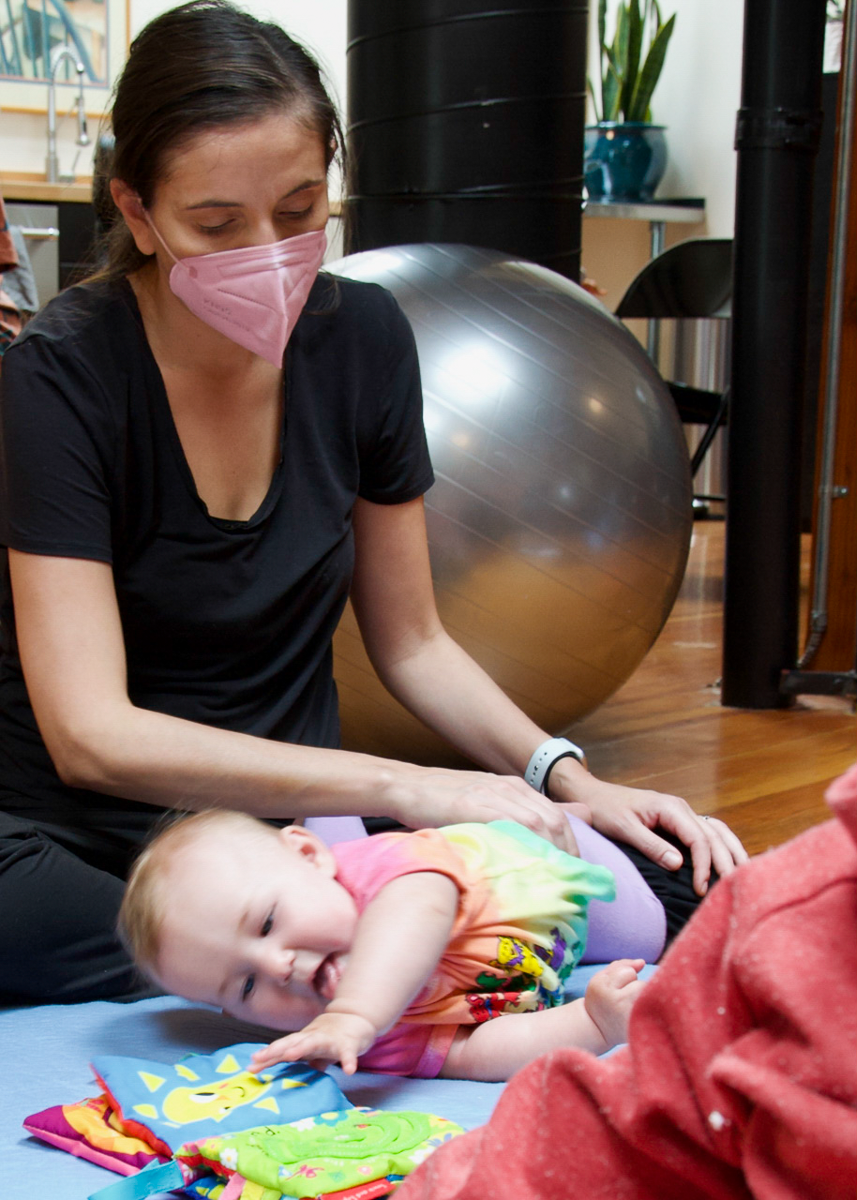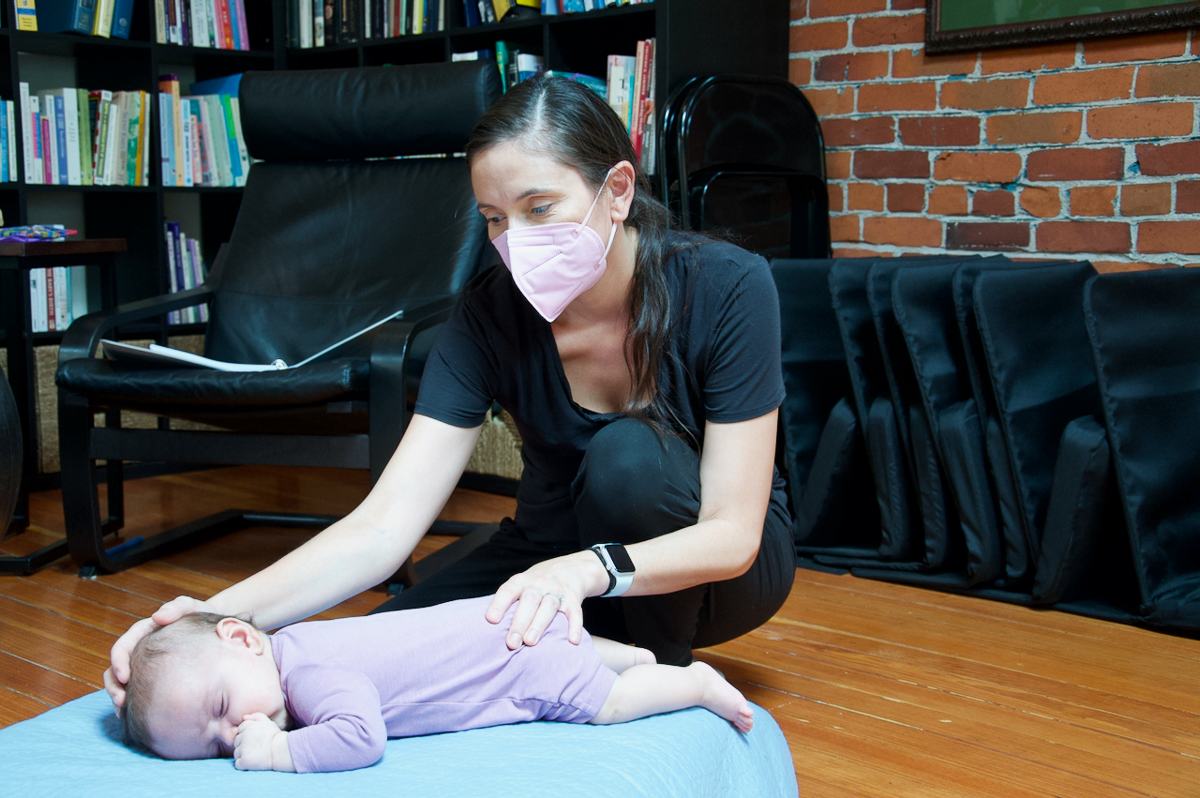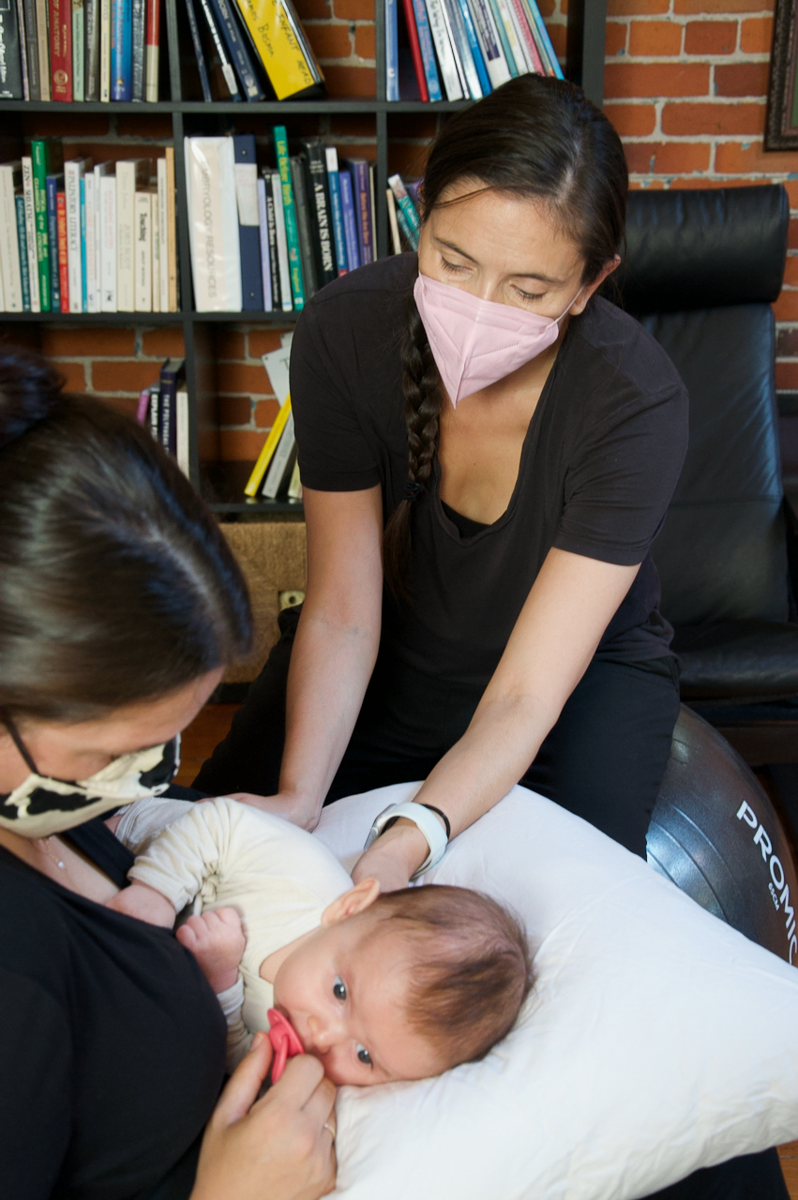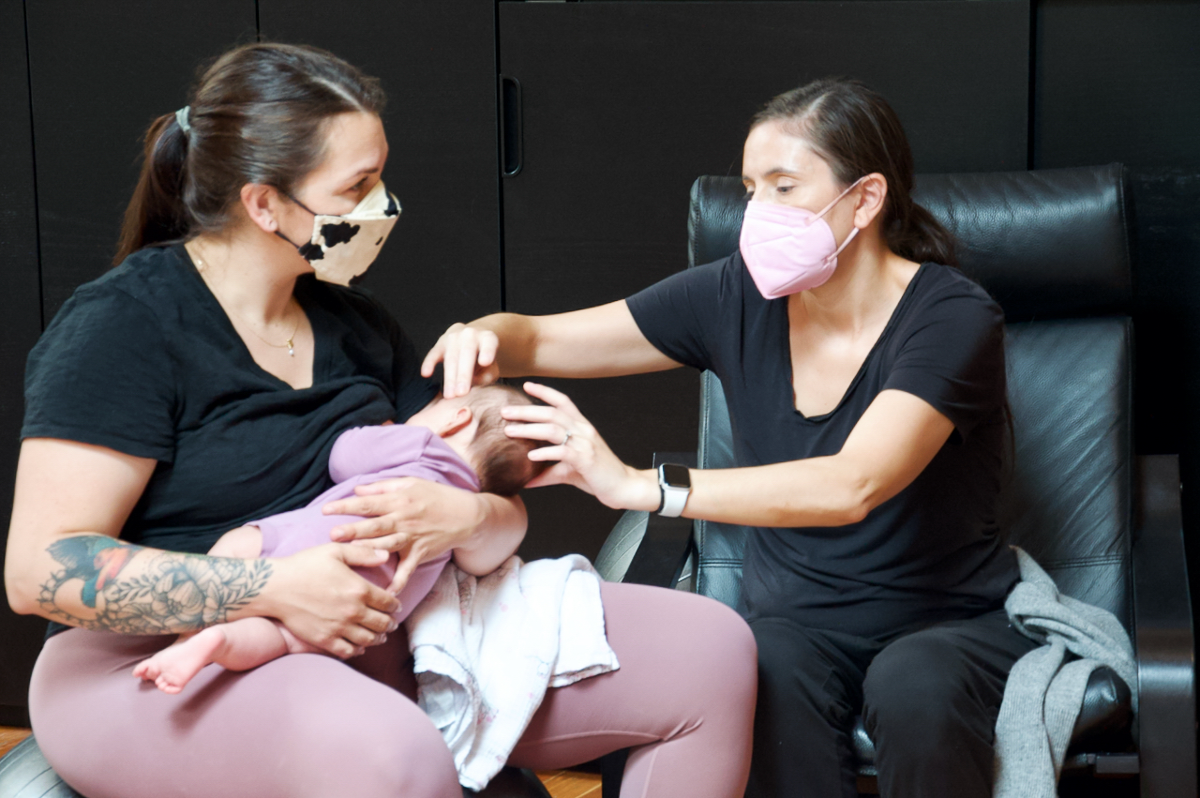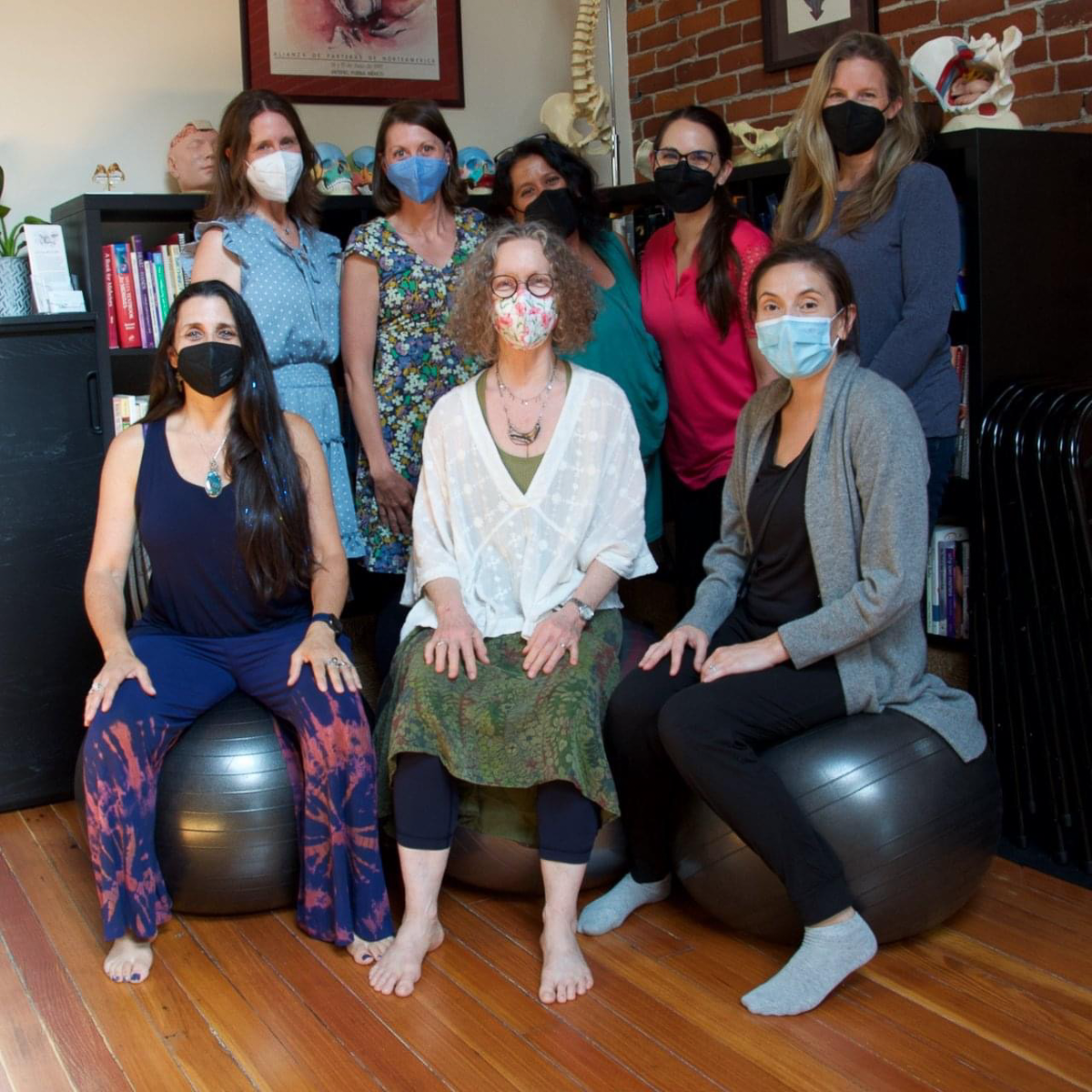Bodywork Massage for Babies: Craniosacral, Craniosacral Fascial Therapy (CFT), Chiropractic, Osteopathy, and more. (2024)
What is baby bodywork and what does it do?
I see a lot of questions about baby bodywork (manual therapy) from parents want looking for help with their babies tongue tie. Baby bodywork is often recommended before and after a tongue tie release. There are many kinds of infant bodywork, and this post will describe a few.
Baby Bodywork
Baby bodywork, encompasses a range of gentle and effective techniques that can benefit your little one. These therapies include infant massage, craniosacral therapy, chiropractic work, and reflexology. Manual therapy can address various conditions in babies, such as muscle tension, head-turning preference, torticollis, cranial molding, tongue tie, reflux, colic, and asymmetries. Professionals who provide bodywork for babies include physical therapists, occupational therapists, massage therapists, chiropractors, and osteopaths.
Benefits of manual therapy
Depending on the type of therapy the benefits may differ somewhat. Some of these therapies are more calming and passive for babies (like massage) and some are typically more active (like physical or occupational therapy). Soothing techniques may address muscle tension, imbalances in the body, and aid in infant weight gain.
Types of Bodywork
Craniosacral therapy
Craniosacral Fascial Therapy (Gillespie Method)
Massage
Reflexology
Chiropractic
Osteopathic
Infant Craniosacral Therapy
One of my favorite methods of bodywork is craniosacral therapy (CST). I studied with Carol Gray in Portland, who teaches an osteopathic based craniosacral approach. I like that CST is that it is very gentle and that the baby is calm and relaxed during treatment. It’s safe for babies of all ages, even newborns. CST focuses on the bones of the pelvis, spinal column, and the bones of the head. It also impacts cranial nerve function. Another important factor that CST addresses is fascia.
What is Fascia?
Fascia is a fibrous connective tissue. It is an interconnected part of the body that encases muscles. It is also integrated into other tissues. It also connects our muscles to our bones and runs from the top of our heads to our toes. Fascia is also what makes up the tissue of a tongue tie. The interconnectedness of fascia is why oral ties also affect the whole body. CST addresses the tension and asymmetries in the fascial system so that the body can move with better alignment and fluidity.
Craniosacral helps improve the flexibility, alignment, and movement of tissues so that they function better. This is why it can be so helpful to have manual therapy done on a baby before and after a release. It can also help a baby feed more comfortably post-release. Most babies will get benefit from 2-6 sessions of bodywork. When looking for a provider, ask if they took training specific to infants. Not all manual therapists have taken post professional training specific to infants, so it’s important to find out who the providers are in your community who can safely and skillfully work with infants.
Craniosacral Fascial Therapy (Gillespie Approach)
Craniosacral Fascial Therapy for infants is a specialized approach that sets itself apart from traditional Craniosacral Therapy. Unlike its predecessor, Craniosacral Fascial Therapy delves deeper into the gentle release of fascial restrictions throughout a baby's body. This unique therapy aims to alleviate tension and discomfort, making it particularly beneficial for infants with tongue ties. By addressing fascial restrictions around the tongue and mouth, it can aid in improving nursing and feeding difficulties associated with tongue ties, promoting a happier, healthier start for your little one. Discover the natural, non-invasive solution your baby deserves with Craniosacral Fascial Therapy.
Neurodevelopmental Therapy (NDT)
Neurodevelopmental Therapy for infants is a specialized approach that focuses on enhancing a baby's motor development from birth. This therapy seeks to optimize your infant's sensory and motor skills, promoting balanced body tension, flexibility, and strength. By addressing these areas, NDT can help improve motor coordination, sensory integration, and overall cognitive function. This holistic and nurturing approach helps your baby reach their developmental milestones, setting a strong foundation for lifelong learning and well-being.
Infant Massage
Infant massage is another gentle approach to nurturing your baby's well-being. Through the use of touch, infant massage promotes relaxation, bonding, and emotional connection between you and your little one. This soothing practice can aid in reducing colic, increase weight gain, improve sleep patterns, and relieve common discomforts such as gas and teething pains. Beyond soothing, infant massage has lasting benefits, enhancing your baby's physical and emotional development. It's a great way to create a strong and loving bond with your infant while supporting their healthy growth and development.
Baby Bodywork - Addressing the Whole Body
These treatment approaches can address various conditions in babies, such as muscle tension, head-turning preference, torticollis, cranial molding, tongue tie, reflux, colic, and asymmetries. Skilled manual therapists can help improve your baby's comfort, sleep patterns, feeding skills, and overall well-being. Whether it's through the soothing touch of infant massage or the gentle adjustments of craniosacral therapy, whole body therapies, offer a holistic approach to supporting your baby's development and promoting their optimal health.
Nurture and Nourish Services - Charleston
Nurture and Nourish offers Bodywork and Beyond
Are you interested in getting bodywork for your baby? I am trained in a variety of infant manual and developmental therapies that can improve regulation, balance body tension, and functional movement.
These include:
Infant Craniosacral Therapy
Infant Total Motion Release
Reflexology
Infant Massage
Infant Neuro-developmental Therapy (NDT)
Reflex Integration
DIR Floortime Method
Sensory Integration and Praxis Strategies
The TummyTime! Method
Do you think your baby would benefit from bodywork. Book a session below.
Baxter, R., Musso, M., Hughes, L., Lahey, L. L., Fabbie, P., Lovvorn, M., Emanuel, M., & Agarwal, R. (2018). 25. In Tongue-tied: How a tiny string under the tongue impacts nursing, feeding, speech, and more (pp. 225–240). chapter, Alabama Tongue-Tie Center. Follow on Insta for more on Infant Feeding and Development
Blog Archive
- Bodywork for Babies
-
Bottle feeding
- May 3, 2024 Getting Baby Back to Breast
- Apr 29, 2024 Colic Baby: Signs, Symptoms, and Relief
- Jan 11, 2024 What kind of bottle is best for your baby? (2024)
- Jul 1, 2023 Mom Support Group: Circle Moms at Gala Desserts
- Jun 3, 2023 How Much Breastmilk Should a Newborn Eat (2024)
- Jan 29, 2023 Bottle Refusal (2024)
- Dec 7, 2022 New Pinterest Page
- Nov 23, 2022 Signs your newborn is hungry (2023)
- Oct 28, 2022 Storing and Preparing Breastmilk: CDC Guidelines (2023)
- Sep 9, 2022 Bottle Feeding your Breastfed Baby: Paced feeding, newborn feeding, bottle nipples, bottle feeding tips (2024)
-
Breastfeeding
- May 3, 2024 Getting Baby Back to Breast
- Apr 29, 2024 Colic Baby: Signs, Symptoms, and Relief
- Sep 8, 2023 Latina Lactation Support
- Jul 1, 2023 Mom Support Group: Circle Moms at Gala Desserts
- Jun 3, 2023 How Much Breastmilk Should a Newborn Eat (2024)
- May 28, 2023 How many diapers does a newborn use a day? (2024)
- May 11, 2023 Tongue Tie and Breastfeeding (2023)
- May 9, 2023 Tongue Tie Symptoms in Newborns: Colic, Reflux, Gas (2024)
- Apr 3, 2023 Newborn Nursing: Latch, Colostrum, Torticollis, Sleepy Babies, Milk Supply, and More (2023)
- Mar 19, 2023 Infant Occupational Therapy: a Holistic Approach (2024)
- Jan 24, 2023 Breastfeeding Tools: Nipple Shields, Pacifiers, and Breast Pumps (2023)
- Jan 19, 2023 Occupational Therapy and Lactation: treatment mastitis, milk bleb treatment, mental health, oral motor therapy, infant therapy (2023)
- Jan 4, 2023 6 Month Milestones
- Dec 26, 2022 Nursing Station (2023)
- Dec 23, 2022 Foods that Decrease Milk Supply
- Dec 11, 2022 4 Month Milestones
- Dec 7, 2022 New Pinterest Page
- Nov 29, 2022 Signs of a “bad latch”
- Nov 28, 2022 How to Increase Breast Milk Supply (2023)
- Nov 23, 2022 Signs your newborn is hungry (2023)
- Nov 21, 2022 Get the Optimal Latch Guide
- Nov 19, 2022 How to become an IBCLC for OTs, SLPs, or PTs (2023)
- Nov 14, 2022 Signs your newborn is hungry- Early feeding cues
- Nov 3, 2022 Baby milestones by month
- Oct 28, 2022 Storing and Preparing Breastmilk: CDC Guidelines (2023)
- Oct 21, 2022 What makes me different?
- Oct 21, 2022 Feeding is a whole body activity
- Oct 10, 2022 Now offering pediatric scale rentals
- Sep 7, 2022 Nipple pain, Ouch!
- Sep 5, 2022 What causes painful breastfeeding?
- Aug 26, 2022 Breastfeeding Newborn Tips - Latch and Positioning (2024)
- Aug 22, 2022 Did you know that you might be pumping with the wrong sized flanges?
- Aug 2, 2022 Celebrating World Breastfeeding week!
-
Charleston, SC
- Apr 29, 2024 Colic Baby: Signs, Symptoms, and Relief
- Sep 8, 2023 Latina Lactation Support
- Aug 14, 2023 Craniosacral Fascial Therapy for Colic, Reflux, and Sleep (2024)
- Apr 12, 2023 Mommy and Me Class
- Apr 3, 2023 Newborn Nursing: Latch, Colostrum, Torticollis, Sleepy Babies, Milk Supply, and More (2023)
- Dec 18, 2022 Occupational Therapy for Tongue Tie (2023)
-
Craniosacral therapy
- Aug 14, 2023 Craniosacral Fascial Therapy for Colic, Reflux, and Sleep (2024)
- Jun 10, 2023 Tongue Tie Therapy: A Whole Body Approach (2024)
- May 27, 2023 Craniosacral Therapy for Tongue Tie (2024)
- May 7, 2023 Tongue Tie Release: Oral Tie Surgery, Therapy, and Specialists (2024)
- Mar 19, 2023 Infant Occupational Therapy: a Holistic Approach (2024)
- Nov 29, 2022 Nurture & Nourish Services can help with
- Nov 10, 2022 Infant Craniosacral Therapy
- Nov 5, 2022 Bodywork Massage for Babies: Craniosacral, Craniosacral Fascial Therapy (CFT), Chiropractic, Osteopathy, and more. (2024)
- Oct 21, 2022 What makes me different?
- Oct 17, 2022 Follow me on IG
- Aug 3, 2022 Infant Craniosacral Therapy
-
Infant Feeding
- May 11, 2023 Tongue Tie and Breastfeeding (2023)
- May 1, 2023 Tongue Tie (2023)
- Mar 19, 2023 Infant Occupational Therapy: a Holistic Approach (2024)
- Jan 29, 2023 Bottle Refusal (2024)
- Nov 30, 2022 Baby Led Weaning
- Aug 25, 2022 New Lactation Office in North Mount Pleasant
-
Lactation
- Sep 8, 2023 Latina Lactation Support
- Jun 3, 2023 How Much Breastmilk Should a Newborn Eat (2024)
- May 28, 2023 How many diapers does a newborn use a day? (2024)
- May 11, 2023 Tongue Tie and Breastfeeding (2023)
- May 9, 2023 Tongue Tie Symptoms in Newborns: Colic, Reflux, Gas (2024)
- Apr 3, 2023 Newborn Nursing: Latch, Colostrum, Torticollis, Sleepy Babies, Milk Supply, and More (2023)
- Jan 24, 2023 Breastfeeding Tools: Nipple Shields, Pacifiers, and Breast Pumps (2023)
- Jan 23, 2023 The Lactation Network
- Jan 19, 2023 Occupational Therapy and Lactation: treatment mastitis, milk bleb treatment, mental health, oral motor therapy, infant therapy (2023)
- Dec 26, 2022 Nursing Station (2023)
- Dec 23, 2022 Foods that Decrease Milk Supply
- Nov 29, 2022 Nurture & Nourish Services can help with
- Nov 28, 2022 How to Increase Breast Milk Supply (2023)
- Nov 23, 2022 Signs your newborn is hungry (2023)
- Nov 21, 2022 Get the Optimal Latch Guide
- Nov 14, 2022 Signs your newborn is hungry- Early feeding cues
- Nov 3, 2022 Baby milestones by month
- Oct 28, 2022 Storing and Preparing Breastmilk: CDC Guidelines (2023)
- Oct 21, 2022 What makes me different?
- Oct 21, 2022 Feeding is a whole body activity
- Oct 17, 2022 Follow me on IG
- Sep 9, 2022 Bottle Feeding your Breastfed Baby: Paced feeding, newborn feeding, bottle nipples, bottle feeding tips (2024)
- Sep 9, 2022 What I can help with
- Sep 5, 2022 What causes painful breastfeeding?
- Aug 26, 2022 Breastfeeding Newborn Tips - Latch and Positioning (2024)
- Aug 25, 2022 New Lactation Office in North Mount Pleasant
- Aug 22, 2022 Did you know that you might be pumping with the wrong sized flanges?
- Aug 2, 2022 Celebrating World Breastfeeding week!
- Jul 28, 2022 Becoming a lactation consultant…
-
Lactation Consultant
- Sep 8, 2023 Latina Lactation Support
- Jun 3, 2023 How Much Breastmilk Should a Newborn Eat (2024)
- May 11, 2023 Tongue Tie and Breastfeeding (2023)
- May 7, 2023 Tongue Tie Release: Oral Tie Surgery, Therapy, and Specialists (2024)
- May 1, 2023 Tongue Tie (2023)
- Jan 23, 2023 The Lactation Network
- Dec 26, 2022 Nursing Station (2023)
- Dec 23, 2022 Foods that Decrease Milk Supply
- Dec 7, 2022 New Pinterest Page
- Nov 28, 2022 How to Increase Breast Milk Supply (2023)
- Nov 21, 2022 Get the Optimal Latch Guide
- Nov 19, 2022 How to become an IBCLC for OTs, SLPs, or PTs (2023)
- Nov 14, 2022 Signs your newborn is hungry- Early feeding cues
- Oct 31, 2022 Office in Mount Pleasant
- Oct 28, 2022 Storing and Preparing Breastmilk: CDC Guidelines (2023)
- Oct 21, 2022 What makes me different?
- Oct 17, 2022 Follow me on IG
- Oct 10, 2022 Now offering pediatric scale rentals
- Sep 9, 2022 Bottle Feeding your Breastfed Baby: Paced feeding, newborn feeding, bottle nipples, bottle feeding tips (2024)
- Sep 9, 2022 What I can help with
- Sep 5, 2022 What causes painful breastfeeding?
- Aug 26, 2022 Breastfeeding Newborn Tips - Latch and Positioning (2024)
- Aug 25, 2022 New Lactation Office in North Mount Pleasant
- Aug 22, 2022 Did you know that you might be pumping with the wrong sized flanges?
- Aug 2, 2022 Celebrating World Breastfeeding week!
- Jul 28, 2022 Becoming a lactation consultant…
-
Milestones
- Mar 19, 2023 Infant Occupational Therapy: a Holistic Approach (2024)
- Feb 9, 2023 12 Month Milestones
- Jan 26, 2023 9 month milestones
- Jan 23, 2023 8 month milestones
- Jan 12, 2023 7 month milestones
- Jan 4, 2023 6 Month Milestones
- Dec 28, 2022 5 month milestones
- Dec 11, 2022 4 Month Milestones
- Dec 7, 2022 New Pinterest Page
- Nov 3, 2022 Baby milestones by month
- Oct 21, 2022 Feeding is a whole body activity
-
Mount Pleasant
- Jul 1, 2023 Mom Support Group: Circle Moms at Gala Desserts
- Apr 12, 2023 Mommy and Me Class
-
Mt Pleasant SC
- May 27, 2023 Craniosacral Therapy for Tongue Tie (2024)
-
Newborns
- Apr 29, 2024 Colic Baby: Signs, Symptoms, and Relief
- Jul 1, 2023 Mom Support Group: Circle Moms at Gala Desserts
- Jun 3, 2023 How Much Breastmilk Should a Newborn Eat (2024)
- May 28, 2023 How many diapers does a newborn use a day? (2024)
- May 9, 2023 Tongue Tie Symptoms in Newborns: Colic, Reflux, Gas (2024)
- Apr 3, 2023 Newborn Nursing: Latch, Colostrum, Torticollis, Sleepy Babies, Milk Supply, and More (2023)
- Nov 29, 2022 Signs of a “bad latch”
- Nov 28, 2022 How to Increase Breast Milk Supply (2023)
- Nov 23, 2022 Signs your newborn is hungry (2023)
- Nov 14, 2022 Signs your newborn is hungry- Early feeding cues
- Oct 28, 2022 Storing and Preparing Breastmilk: CDC Guidelines (2023)
- Sep 9, 2022 Bottle Feeding your Breastfed Baby: Paced feeding, newborn feeding, bottle nipples, bottle feeding tips (2024)
- Sep 5, 2022 What causes painful breastfeeding?
- Aug 26, 2022 Breastfeeding Newborn Tips - Latch and Positioning (2024)
-
Nurture and Nourish Charleston
- Jan 11, 2024 What kind of bottle is best for your baby? (2024)
- Jul 1, 2023 Mom Support Group: Circle Moms at Gala Desserts
- Mar 20, 2023 Free Mommy and Me Class! - SOLD OUT (2022)
- Nov 1, 2022 Nurture & Nourish - New Digital Business Cards
- Oct 31, 2022 Office in Mount Pleasant
- Oct 21, 2022 What makes me different?
- Oct 17, 2022 Follow me on IG
- Sep 9, 2022 What I can help with
- Sep 7, 2022 Nipple pain, Ouch!
- Sep 5, 2022 What causes painful breastfeeding?
- Aug 25, 2022 New Lactation Office in North Mount Pleasant
-
Nurture and Nourish Services
- Sep 8, 2023 Latina Lactation Support
- Apr 12, 2023 Mommy and Me Class
- Dec 18, 2022 Occupational Therapy for Tongue Tie (2023)
-
Occupational Therapy
- Jun 10, 2023 Tongue Tie Therapy: A Whole Body Approach (2024)
- May 7, 2023 Tongue Tie Release: Oral Tie Surgery, Therapy, and Specialists (2024)
- May 1, 2023 Tongue Tie (2023)
- Mar 20, 2023 Free Mommy and Me Class! - SOLD OUT (2022)
- Mar 19, 2023 Infant Occupational Therapy: a Holistic Approach (2024)
- Jan 29, 2023 Bottle Refusal (2024)
- Jan 19, 2023 Occupational Therapy and Lactation: treatment mastitis, milk bleb treatment, mental health, oral motor therapy, infant therapy (2023)
- Dec 18, 2022 Occupational Therapy for Tongue Tie (2023)
- Dec 11, 2022 4 Month Milestones
- Dec 7, 2022 New Pinterest Page
- Nov 30, 2022 Baby Led Weaning
- Nov 29, 2022 Nurture & Nourish Services can help with
- Nov 19, 2022 How to become an IBCLC for OTs, SLPs, or PTs (2023)
- Nov 10, 2022 Infant Craniosacral Therapy
- Nov 3, 2022 Baby milestones by month
- Nov 1, 2022 Nurture & Nourish - New Digital Business Cards
- Oct 31, 2022 Office in Mount Pleasant
- Oct 21, 2022 What makes me different?
- Oct 21, 2022 Feeding is a whole body activity
- Sep 27, 2022 Have you heard of baby-led weaning
- Sep 9, 2022 Bottle Feeding your Breastfed Baby: Paced feeding, newborn feeding, bottle nipples, bottle feeding tips (2024)
- Sep 9, 2022 What I can help with
- Aug 25, 2022 New Lactation Office in North Mount Pleasant
- Aug 3, 2022 Infant Craniosacral Therapy
- Jul 29, 2022 Pediatric craniosacral therapy in Mount Pleasant, SC!
- Jul 28, 2022 Becoming a lactation consultant…
-
Tongue-tie
- Aug 14, 2023 Craniosacral Fascial Therapy for Colic, Reflux, and Sleep (2024)
- Jun 10, 2023 Tongue Tie Therapy: A Whole Body Approach (2024)
- May 27, 2023 Craniosacral Therapy for Tongue Tie (2024)
- May 11, 2023 Tongue Tie and Breastfeeding (2023)
- May 9, 2023 Tongue Tie Symptoms in Newborns: Colic, Reflux, Gas (2024)
- May 7, 2023 Tongue Tie Release: Oral Tie Surgery, Therapy, and Specialists (2024)
- May 1, 2023 Tongue Tie (2023)
- Dec 18, 2022 Occupational Therapy for Tongue Tie (2023)
- Nov 29, 2022 Signs of a “bad latch”
- Nov 5, 2022 Bodywork Massage for Babies: Craniosacral, Craniosacral Fascial Therapy (CFT), Chiropractic, Osteopathy, and more. (2024)
- Oct 17, 2022 Follow me on IG
- Sep 9, 2022 What I can help with
- Sep 5, 2022 What causes painful breastfeeding?
- Aug 25, 2022 New Lactation Office in North Mount Pleasant
- Aug 3, 2022 Infant Craniosacral Therapy
- Whole Body Therapy
-
breastmilk
- Jan 11, 2024 What kind of bottle is best for your baby? (2024)


